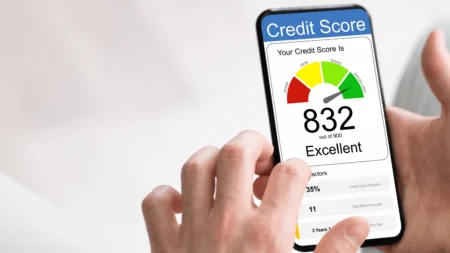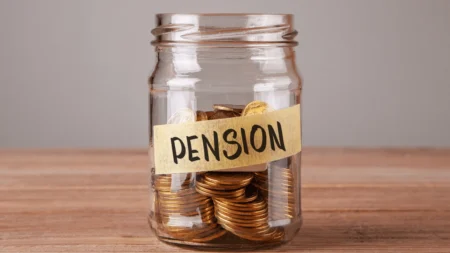There are specific RESP withdrawal rules contributors or beneficiaries must follow to avoid penalties. RESP is a government initiative that encourages parents to invest in their child(ren)’s post-secondary education.
Funds in an RESP account are tax-free and generate an instant 20% return on investments.
The good thing is that anyone can open an RESP account for a child, be it a parent, guardian, or in the case of grandparent also known as subscribers, who name their child, ward or grandchild as the beneficiary.
Knowing the ropes of RESP, what it entails and how to go about withdrawal will help you in your decision-making process. This article will walk you through opening an RESP account, the types of RESP in Canada, calculating and withdrawing from an RESP account.
Understanding RESPs
Registered Education Savings Plan (RESP) is a college plan by the Canadian government that allows parents to save towards their child’s education from birth. The scheme encourages investing in a child’s future post-secondary education.
In RESP, the child is termed a beneficiary/student while the parent or guardian is termed the subscriber/contributor. So, subscribers of an RESP can make contributions that generate tax-free incomes.
One of the perks of RESP is that the government also contributes a certain amount of money to these plans for children under age 18. Also, subscribers do not get a tax deduction for any investment in an RESP.
Taxes are only due when funds are withdrawn to pay for a child’s education. Whether by blood or adoption, anyone related to the child can contribute; it can be the mom, dad, aunt, uncle, etc.
Usually, the Canadian government’s money is taxed, but since it is general knowledge that most students have little to no income, they can withdraw the money tax-free. The money the government deposits into the account is termed the Canadian Education and Savings Grant. The amount is generated based on family income. Matching benefit from the government applies only on the first $2,500 in contribution yearly, while the grant’s limit is at a maximum of $7,200.
As soon as the beneficiary enters college, he/she receives educational assistance payment (EAPs). These EAPs serve as income for the beneficiary. They can be sent to the contributor if the beneficiary does not attend a post-secondary institution or the contributor’s choice.
Opening an RESP Account
Parents/Guardians can open RESPs in Canada at most financial institutions like banks, credit unions, mutual fund companies, and investment dealers. All you need to set up an RESP is the child’s birth certificate and Social Insurance Number (SIN).
Regardless of how many RESP you open, the maximum lifetime total contribution limit is $50,000. Any contribution above this limit would be taxed at 1% monthly at the end of that month. Funding an RESP account is very simple as you can invest in stocks, bonds, exchange-traded funds, mutual funds, etc.
Types of RESPs in Canada
There are currently three categories of plans to choose from when setting up a Registered Education Savings Plan. The three programs are:
- Non-Family Plan
The non-family can only accommodate a single beneficiary. It is suitable for people who want to manage their RESPs per child. With this plan, you can invest based on the child’s times since it is a single beneficiary. You can also set the asset distribution and risk tolerance accordingly.
- Family Plan
The family plan allows you to have numerous beneficiaries. These beneficiaries must all have a relation with the subscriber via blood or adoption. This plan is suitable for subscribers who want to allocate funds as needed per child. It is advisable to plan well if you are handling multiple wards of different ages to ensure funds are available per child when required for their post-secondary education.
- Group Plans
Another available option is the Group RESPs, also known as group scholarship trusts. This seems like a perfect option for people who want to contribute money to other people. This plan allows group contribution, which can be managed by a plan dealer.
With this plan, a child’s payout will be based on the total money in the account and the number of students in the same age range attending a post-secondary institution that year.
This might seem attractive, but it is important to note that this plan has strict contribution and withdrawal rules. If not carefully handled, there are penalties attached to this plan that can affect how much a child will have access to when they need it for school.
Calculating RESP
In Canada, RESP is calculated using the following factors:
- The contributions to the RESP account
- The match from the Canadian Education Savings Grant (CESG)
- The investment returns
How to Make an RESP Withdrawal
The process involved in withdrawing from your RESP in Canada is hassle-free. Once the beneficiary of the account is registered in a full-time or part-time program in a qualifying post-secondary institution, the subscriber can request funds to offset the beneficiary’s education.
Post-Secondary Education Payments (PSE) is the amount a subscriber has contributed, and it is not taxed. Several rules are governing owning and withdrawal from an RESP account.
Below are some of the rules you should know before attempting to withdrawal from an RESP account.
- Only a subscriber can make withdrawals.
When attempting to make a withdrawal from an RESP account, note that only the subscriber, that is, the person who set up the account and made contributions, can make withdrawals. Also, withdrawals cannot be initiated or created by the beneficiary (student) of the account.
Any withdrawals of contributions made by the subscriber are known as Post-Secondary Education Payments (PSE). Depending on the pre-set instruction, the funds can be sent to either the subscriber or the beneficiary. The government grant/bond portion, also known as the Education Assistance Payments (EAP), can only be sent to the beneficiary.
- Proof of Enrollment
Any subscriber attempting to make a withdrawal must provide the financial institution in charge of the RESP with proof of enrollment. This proof of registration must confirm that the beneficiary is enrolled as either a part-time or full-time student in an approved institution.
The proof can include an offer letter, program name, the course confirmation or other information showing student number, etc.
Students will be taxed only on EAP withdrawals, but there are no taxes on PSE. When processing a withdrawal, the financial institution will issue a T4A tax form in the beneficiary’s name for EAP payments only.
Maximum RESP Withdrawal
Although any amount can be withdrawn from subscriber contributions (PSE), during the first 13 weeks of schooling for the EAP payment, there is a limit of $5000. However, once the 13 weeks have elapsed, you can withdraw any amount of EAP contributions. Currently, there are no limits on the amount that a subscriber (PSE) can withdraw.
Notably, a full-time student can get a maximum of $7200 in government grant/bond and $3600 for a part-time student. Any amount exceeding the limits mentioned above must be paid back to the government.
RESP Withdrawal Penalty
Hefty fines await any subscriber who withdraws early or collapses the RESP before the funds are used. Below are some of the penalties:
- Return of all government grants equal to the amount withdrawn
- Reduction of the lifetime contribution limit into the RESP
- Forfeit the amount of grant repaid
Regardless of whatever, it is advisable to not close your RESP as the income you earn on your contributions will remain within the program.
What Happens to the Funds in RESPs?
Even if your ward decides to forfeit or delay post-secondary, there are still a few ways to utilize your investment. Since RESPs can be open for 36 years, it is advisable to leave them available for the time being. Also, you change the beneficiary by naming someone else.
If you are running on a family plan, you can transfer or forward the money to the next child. While on the group plan, you can share your plan with another beneficiary without any fees. Always read up on the terms and conditions of any plans to know the dos and don’ts.
You can transfer any contribution made to an RESP or any investment income generated. The money must sum up to $50,000 before it can be transferred into your Registered Retirement Savings Plan (RRSP).
To be eligible for this option, you must:
- Be a Canadian resident.
- RESP must have been opened for an average of 10 years
- Beneficiaries must be at least 21 years of age.
- You must have enough contribution space in your RRSP
- All beneficiaries must not be attending a post-secondary institution.
Lastly, you can close the RESP account if none of the options above is suitable for you. Note that all the government’s grants and bonds must be returned when you close an RESP account. Luckily, all contributions made to the point of closure are yours and are tax-free.
If the RESP has been open for at least ten years, and each beneficiary is at least 21 years of age and not continuing their education, you can withdraw some of your investment earnings. Bear in mind that all earning will be taxed at your regular income tax level and an additional 20% termed the Accumulated Income Payment (AIP).
Above all, setting up an RESP for your child early enough will allow you to leverage on the compound interest, which will convert to more money towards your child’s education in the future.







